Surface aggregation patterns of LDL receptors near coated pits III: potential effects of combined retrograde membrane flow-diffusion and a polarized-insertion mechanism
- PMID: 24885954
- PMCID: PMC4048462
- DOI: 10.1186/1742-4682-11-23
Surface aggregation patterns of LDL receptors near coated pits III: potential effects of combined retrograde membrane flow-diffusion and a polarized-insertion mechanism
Abstract
Although the process of endocytosis of the low density lipoprotein (LDL) macromolecule and its receptor have been the subject of intense experimental research and modeling, there are still conflicting hypotheses and even conflicting data regarding the way receptors are transported to coated pits, the manner by which receptors are inserted before they aggregate in coated pits, and the display of receptors on the cell surface. At first it was considered that LDL receptors in human fibroblasts are inserted at random locations and then transported by diffusion toward coated pits. But experiments have not ruled out the possibility that the true rate of accumulation of LDL receptors in coated pits might be faster than predicted on the basis of pure diffusion and uniform reinsertion over the entire cell surface. It has been claimed that recycled LDL receptors are inserted preferentially in regions where coated pits form, with display occurring predominantly as groups of loosely associated units. Another mechanism that has been proposed by experimental cell biologists which might affect the accumulation of receptors in coated pits is a retrograde membrane flow. This is essentially linked to a polarized receptor insertion mode and also to the capping phenomenon, characterized by the formation of large patches of proteins that passively flow away from the regions of membrane exocytosis. In this contribution we calculate the mean travel time of LDL receptors to coated pits as determined by the ratio of flow strength to diffusion-coefficient, as well as by polarized-receptor insertion. We also project the resulting display of unbound receptors on the cell membrane. We found forms of polarized insertion that could potentially reduce the mean capture time of LDL receptors by coated pits which is controlled by diffusion and uniform insertion. Our results show that, in spite of its efficiency as a possible device for enhancement of the rate of receptor trapping, polarized insertion nevertheless fails to induce the formation of steady-state clusters of receptor on the cell membrane. Moreover, for appropriate values of the flow strength-diffusion ratio, the predicted steady-state distribution of receptors on the surface was found to be consistent with the phenomenon of capping.
Figures

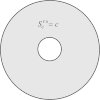
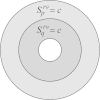
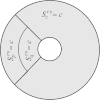
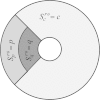
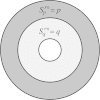
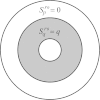
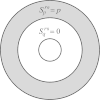
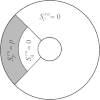
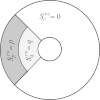
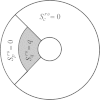
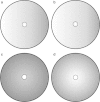
Similar articles
-
Surface aggregation patterns of LDL receptors near coated pits II. The retrograde membrane flow-diffusion and generalized plaque-form insertion mechanism.Math Med Biol. 2012 Jun;29(2):109-30. doi: 10.1093/imammb/dqq018. Epub 2010 Oct 29. Math Med Biol. 2012. PMID: 21036894
-
Effect of preferential insertion of LDL receptors near coated pits.Cell Biophys. 1985 Sep;7(3):197-204. doi: 10.1007/BF02790465. Cell Biophys. 1985. PMID: 2416446
-
The effect of diffusion on the trapping of membrane-bound receptors by localized coated pits.Biophys Chem. 1986 Dec 15;25(2):117-25. doi: 10.1016/0301-4622(86)87002-8. Biophys Chem. 1986. PMID: 2880612
-
Low-density lipoprotein (LDL) receptors and the regulation of serum LDL levels.Neth J Med. 1985;28(2):52-8. Neth J Med. 1985. PMID: 3919323 Review. No abstract available.
-
Endocytosis and signals for internalization.Curr Opin Cell Biol. 1991 Aug;3(4):634-41. doi: 10.1016/0955-0674(91)90034-v. Curr Opin Cell Biol. 1991. PMID: 1663371 Review.
Cited by
-
Sigma-2 Receptor/TMEM97 and PGRMC-1 Increase the Rate of Internalization of LDL by LDL Receptor through the Formation of a Ternary Complex.Sci Rep. 2018 Nov 15;8(1):16845. doi: 10.1038/s41598-018-35430-3. Sci Rep. 2018. PMID: 30443021 Free PMC article.
References
-
- Basu Sandip K. Receptor-mediated endocytosis: an overview of a dynamic process. J Biosci. 1984;6(4):535–542. doi: 10.1007/BF02703904. - DOI
MeSH terms
Substances
LinkOut - more resources
Full Text Sources
Other Literature Sources

